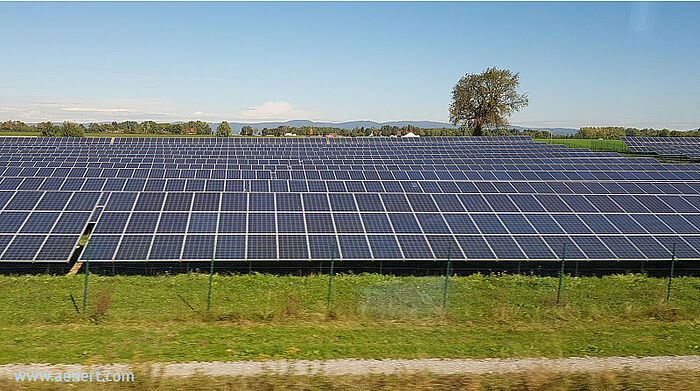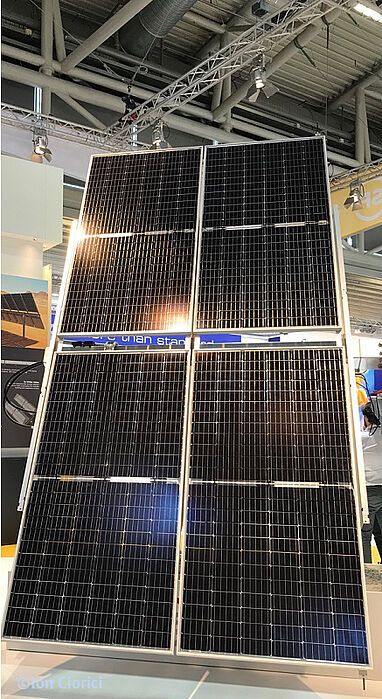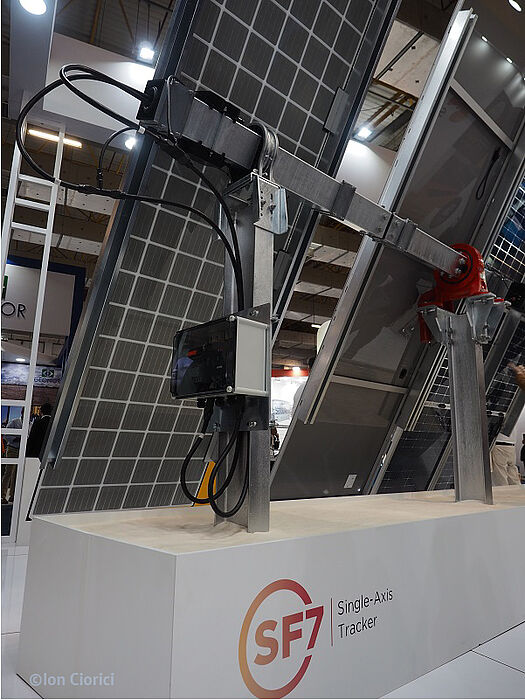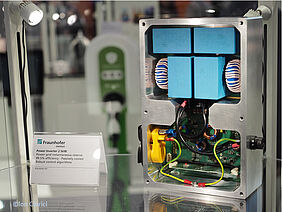The calendar of upcoming events in May this year is traditionally full of various exhibitions, conferences and seminars in different sectors of modern energy. Among them, the next Intersolar Europe 2022 exhibition which will be held at the beginning of the second decade of May in Munich is famous for its continuity, popularity and importance. The exhibition will host a number of side events including, for example, the Green Hydrogen Forum and The smarter E Europe. According to the organizers' website, the exhibition will be spread over 132,000 m2 and more than 900 exhibitors will take part.
The main topics of the events will be photovoltaics (solar cells and modules, system technology, components, assembly systems, installation aids, tracking systems, production technology), solar thermal energy, solar power plants. Exhibitor groups include manufacturers, suppliers, traders and service providers of photovoltaic and solar thermal products and services, PV and ST system provider, project developer/EPC company, provider of network infrastructure, certification institutes, research and development institutes, specialist media, publishers, financial service providers.
Germany is the leader in Europe in terms of the total capacity of installed photovoltaic systems
European companies will certainly dominate in Munich, in particular Siemens AG, Fraunhofer-Institut für Solare Energiesysteme ISE, Helmholtz-Zentrum Berlin für Materialien und Energie GmbH. However, Chinese and American companies, for example, will also be well represented. In addition, many industry leaders have long had subsidiaries in Europe, which will be exhibiting their developments, including First Solar GmbH, JA Solar GmbH, Hanwha Q CELLS GmbH.
Solar energy is rapidly developing around the world, including in Europe. According to our calculations based on data from Irena, last year the total capacity of solar power generators in Europe increased by 14% to 185.9 GW. However, about 60% of this capacity is concentrated in just four countries – Germany (31.5%), Italy (12.2%), and France and the Netherlands (about 7.8% each). In 2020, according to BP, just over 3,871 TWh of electricity was generated in Europe, with renewables accounting for about 24%, but the contribution of solar power was quite modest at less than 5% or about 1 79 TWh. These figures indicate that, on the one hand, there are good examples of the development of solar technology, as shown by Germany, on the other hand, the solar power development in Europe is not entirely satisfactory and lags far behind wind power.
The problems lying at the bottom of this development are generally known. For example, for photovoltaics, there are quite competitive overnight costs comparable to wind power, but the insufficient efficiency of solar panels (about 14-22%) and low capacity factor (rarely exceeding 30%) are the most important constraints for the development of this energy sector. Regarding thermal solar power with concentrators, after a staggering start in the previous decade in Spain, the development of this sector is currently limited in Europe.


Tracker systems can significantly increase the efficiency of solar panels
It is obvious that the participants of the upcoming exhibition in Munich understand the challenges they are facing and will try to present new original solutions to the mentioned problems. In our opinion, of particular interest are solar energy storage technologies, especially in combination with hydrogen production, tracking systems, and hybrid stations. At present, several solar plants with a capacity of more than one gigawatt are successfully operating in the world, and in India and China four photovoltaic stations have a capacity of more than two gigawatts, while in Europe reaching such capacities seems to be a challenging endeavour. Of course, the level of solar activity plays an important role here, but in the south of Europe it is quite comparable with the leading regions. Perhaps it is also a question of reasonable integration between countries and optimal interstate financing of projects. Unfortunately, a solar energy production project with the subsequent supply of electricity to Europe, unique in its characteristics, was suspended in the countries of the Middle East and North Africa (MENA region) some time ago, which could have significantly increased the share of solar generation in Europe. Nevertheless, solar energy today is an integral part of the economy and even of the surrounding landscape, to which Intersolar's 30 years of activity has contributed in no small way.
No less significant for the world's most populous region will be the LED expo, which will be held in India in Mumbai in the third decade of May. At last similar expo in 2019, some 300 exhibitors were presented here, and more than 10,000 people were able to attend. This time, according to the organizers, the event will be attended by more than 100 well-known brands, which will present more than 500 innovative LED products.
1-LED, 2-Lens, 3-Led Chip, 4-Frame, 5-Anode, 6-Katode, 7-p-Crystal, 8-n-Crystal, 9-Active Layer, 10-Plate
LED today represent tremendous opportunities for increasing energy efficiency everywhere and reducing dependence on fossil fuels. In addition, LED is characterized by a rare combination of creative interests of the most diverse groups of manufacturers, from technologists and engineers to designers and architects. In this regard, the popularity and importance of LED expo will obviously only increase.
Among other important events of the May energy marathon is the upcoming 30th European Biomass Conference and Exhibition in Marseilles. Due to Covid restrictions, it will be held online. Last year's figures prove the popularity of the event: over 2,000 registered participants from more than 90 countries and about 8,000 visitors.
Dedicated to renewable and low carbon energy solutions the All-Energy exhibition will take place on 11-12 May in Glasgow and will bring together "...professionals from a variety of sectors like hydropower, offshore/onshore wind, bioenergy, marine renewable energy and others, coming from the UK, France, Germany, China, USA, Italy, and beyond".
